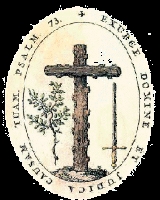
Spanish Inquisition
Overview
The Tribunal of the Holy Office of the Inquisition , commonly known as the Spanish Inquisition (Inquisición española), was a tribunal
established in 1480 by Catholic Monarchs
Ferdinand II of Aragon
and Isabella I of Castile
. It was intended to maintain Catholic orthodoxy in their kingdoms, and to replace the Medieval Inquisition
which was under Papal control. The Inquisition was originally intended in large part to ensure the orthodoxy of those who converted from Judaism and Islam.
Tribunal
A tribunal in the general sense is any person or institution with the authority to judge, adjudicate on, or determine claims or disputes—whether or not it is called a tribunal in its title....
established in 1480 by Catholic Monarchs
Catholic Monarchs
The Catholic Monarchs is the collective title used in history for Queen Isabella I of Castile and King Ferdinand II of Aragon. They were both from the House of Trastámara and were second cousins, being both descended from John I of Castile; they were given a papal dispensation to deal with...
Ferdinand II of Aragon
Ferdinand II of Aragon
Ferdinand the Catholic was King of Aragon , Sicily , Naples , Valencia, Sardinia, and Navarre, Count of Barcelona, jure uxoris King of Castile and then regent of that country also from 1508 to his death, in the name of...
and Isabella I of Castile
Isabella I of Castile
Isabella I was Queen of Castile and León. She and her husband Ferdinand II of Aragon brought stability to both kingdoms that became the basis for the unification of Spain. Later the two laid the foundations for the political unification of Spain under their grandson, Charles V, Holy Roman Emperor...
. It was intended to maintain Catholic orthodoxy in their kingdoms, and to replace the Medieval Inquisition
Medieval Inquisition
The Medieval Inquisition is a series of Inquisitions from around 1184, including the Episcopal Inquisition and later the Papal Inquisition...
which was under Papal control. The Inquisition was originally intended in large part to ensure the orthodoxy of those who converted from Judaism and Islam.

